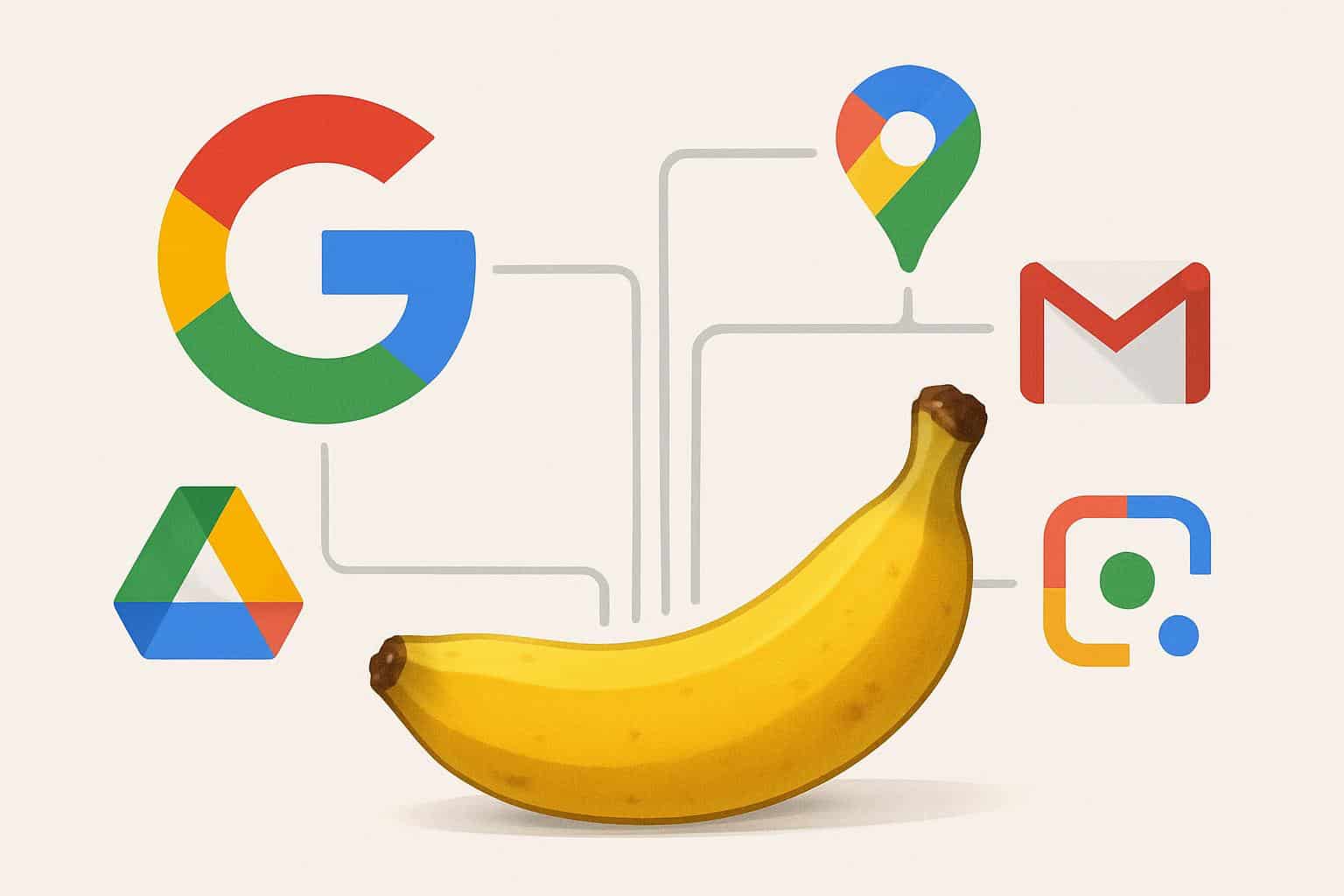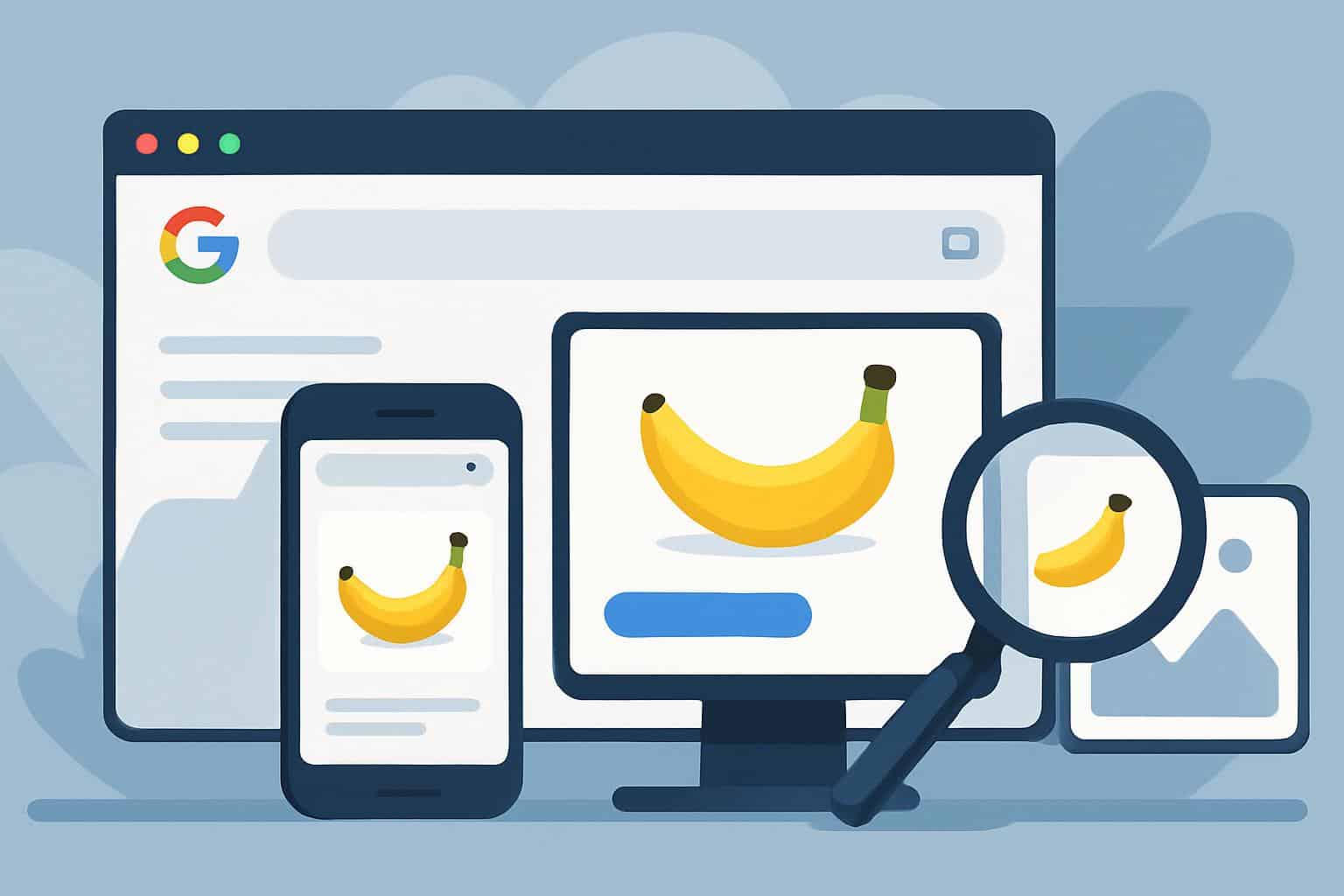Google’s Nano Banana image model has become an unexpected breakout inside Gemini, and now seems poised to take it out of the sandbox. Code strings, UI changes and a tease from leadership point to Google getting ready to bring Nano Banana into flagship touchpoints like the Google app, Lens and even Photos — Circle to Search may also make an appearance.
Signals in the Google app hint at broader Nano Banana rollout
Android Authority found mentions of Nano Banana across the Google app on Android, which includes AI Mode for Search, in which a new prompt box displays a “Create images” button — the exact phrasing Google uses in Gemini. In one build (version 16.40.18.sa.arm64), the model name as well as a banana logo are coming up in various places.

Now, when the camera lens is pointed at an object or some text in Google Lens, a new “Create” option appears on the navigation bar. Tapping it invites users to “capture, create, share” — then pivots to a describe-and-edit workflow that closely mirrors Gemini’s image tools. Circle to Search also displays a “Create” button (which, in the current implementation at least, isn’t always responsive) above the selected region.
Though Google has not formally announced the expansion (or responsible card placement), it’s fanning speculation a little harder this time, with VP of engineering for Search, Rajan Patel, sharing without comment an X report with a playful “keep your eyes peeled” on top — banana emoji included. Code hints discovered previously suggest that early hooks for Nano Banana exist in Google Photos.
Why Nano Banana caught fire with rapid, playful edits
Built as a kind of text-to-image generator, Nano Banana has been appropriated for rapid, jokey edits — turning snapshots into figurines, neatening up backgrounds and reimagining old photos. Within weeks, users logged more than 200 million edits — a velocity that testifies to low friction and creative elbow room. The model’s output is fast, on-brand and shareable — a trifecta that consistently drives social trends.
Google’s overall trust-and-safety posture is also an assist. The company has promoted watermarking and provenance standards like SynthID across its generative stack through DeepMind, which will make it more palatable for large-scale rollouts of products that touch billions of users.
What deeper integration across Google apps could enable
Embedding Nano Banana in Lens would turn identification into immediate creation. Just picture pointing your phone at a sneaker, and out spits matching poster concepts; snapping a storefront logo and spinning out brand-aligned social assets then and there. And in Circle to Search, highlighting part of an image and tapping “Create” might launch a context-aware set of edit tools — expand the frame, swap materials or apply consistent styling — without you ever leaving your app.

More intimate integration with Photos would unlock a continuum from archival cleanup to imaginative remixes, facilitating workflows that begin in the realm of restoration and conclude in stylized reinterpretation. If any computation runs on-device, which is an approach that Google frequently combines with cloud inference, you might see lower latencies, increased privacy and better performance out in the wild.
Competitive context and risks in the fast AI image race
Platform-native image selection for generation is fast becoming table stakes. Microsoft has sewn creation tools into Copilot, Paint and Edge; Apple introduced Image Playground across its devices; Meta keeps threading generative features through Instagram and Messenger. Partnering with Google on Nano Banana would capitalize on surfaces that already process billions of visual and text queries each month: Lens for visually interactive searching and the search bar to aid in users’ search for images and information.
The challenge is balance. As generative edits become more convincing, the line between photography and synthesis is disappearing. Clear labeling, content credentials and policy guardrails will matter, especially if these features get adopted by Photos. Industry frameworks such as the Coalition for Content Provenance and Authenticity and guidance from the Partnership on AI can work to anchor responsible deployment at scale.
Official word from Google and timeline details to watch
There’s no official timetable for the launch; however, Google frequently enables features via server-side flags ahead of wider rollouts. Moreover, with the coded allusions, preliminary interface elements and executive signals to consider, a staged rollout — “door by door” and “eligibility check” included — appears imminent.
If Nano Banana does wind up in the Google app, Lens, Circle to Search and Photos, it would represent a shift in strategy from a cute Gemini novelty to being baked into everyday discovery and search.
That’s a much bigger story than a viral model — it’s Google turning casual curiosity into instant creation wherever you tap.

